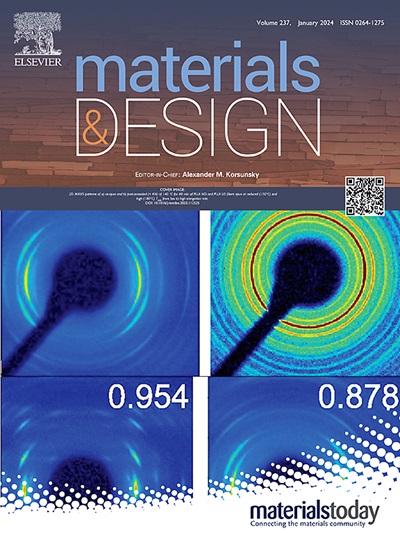Understanding effects of deformation parameters on dynamic recrystallization-dependent superplasticity in an Al-Cu-Li alloy
IF 7.6
2区 材料科学
Q1 MATERIALS SCIENCE, MULTIDISCIPLINARY
引用次数: 0
Abstract
Aluminum alloys with initial unrecrystallized structures generally exhibit better superplasticity and are produced more efficiently and cost-effectively than fully recrystallized ones. However, the underlying recrystallization and deformation mechanisms of dynamic recrystallization (DRX)-dependent superplastic aluminium alloys under varying deformation parameters are not yet fully understood. This study investigates the effects of deformation parameters, Al3Zr dispersoids, and coarse secondary particles on DRX and superplasticity in an Al-Cu-Li alloy. The alloy achieves a maximum elongation of 780 % at 430 °C and 0.002 s−1, primarily due to continuous dynamic recrystallization (CDRX) and grain boundary sliding (GBS). Under optimal conditions, deformed grains transform into equiaxed recrystallized grains through sub-grain rotation and coalescence, with GBS dominating subsequent deformation. Lower Zener-Hollomon parameter (lnZ) conditions promote dynamic recovery (DRV) and sub-grain growth, hindering grain refinement and superplastic deformation. Conversely, higher lnZ values inhibit recrystallization due to insufficient thermal driving force and lower DRV, resulting in retained banded grains and reduced elongation. Cu-rich secondary phases enhance CDRX but lose efficacy with their dissolution and coarsening at low lnZ conditions. This work provides insights into DRX-dependent superplastic mechanisms and offers guidance for optimizing deformation parameters to enhance the performance of aluminum alloys.

求助全文
约1分钟内获得全文
求助全文
来源期刊

Materials & Design
Engineering-Mechanical Engineering
CiteScore
14.30
自引率
7.10%
发文量
1028
审稿时长
85 days
期刊介绍:
Materials and Design is a multi-disciplinary journal that publishes original research reports, review articles, and express communications. The journal focuses on studying the structure and properties of inorganic and organic materials, advancements in synthesis, processing, characterization, and testing, the design of materials and engineering systems, and their applications in technology. It aims to bring together various aspects of materials science, engineering, physics, and chemistry.
The journal explores themes ranging from materials to design and aims to reveal the connections between natural and artificial materials, as well as experiment and modeling. Manuscripts submitted to Materials and Design should contain elements of discovery and surprise, as they often contribute new insights into the architecture and function of matter.
 求助内容:
求助内容: 应助结果提醒方式:
应助结果提醒方式:


